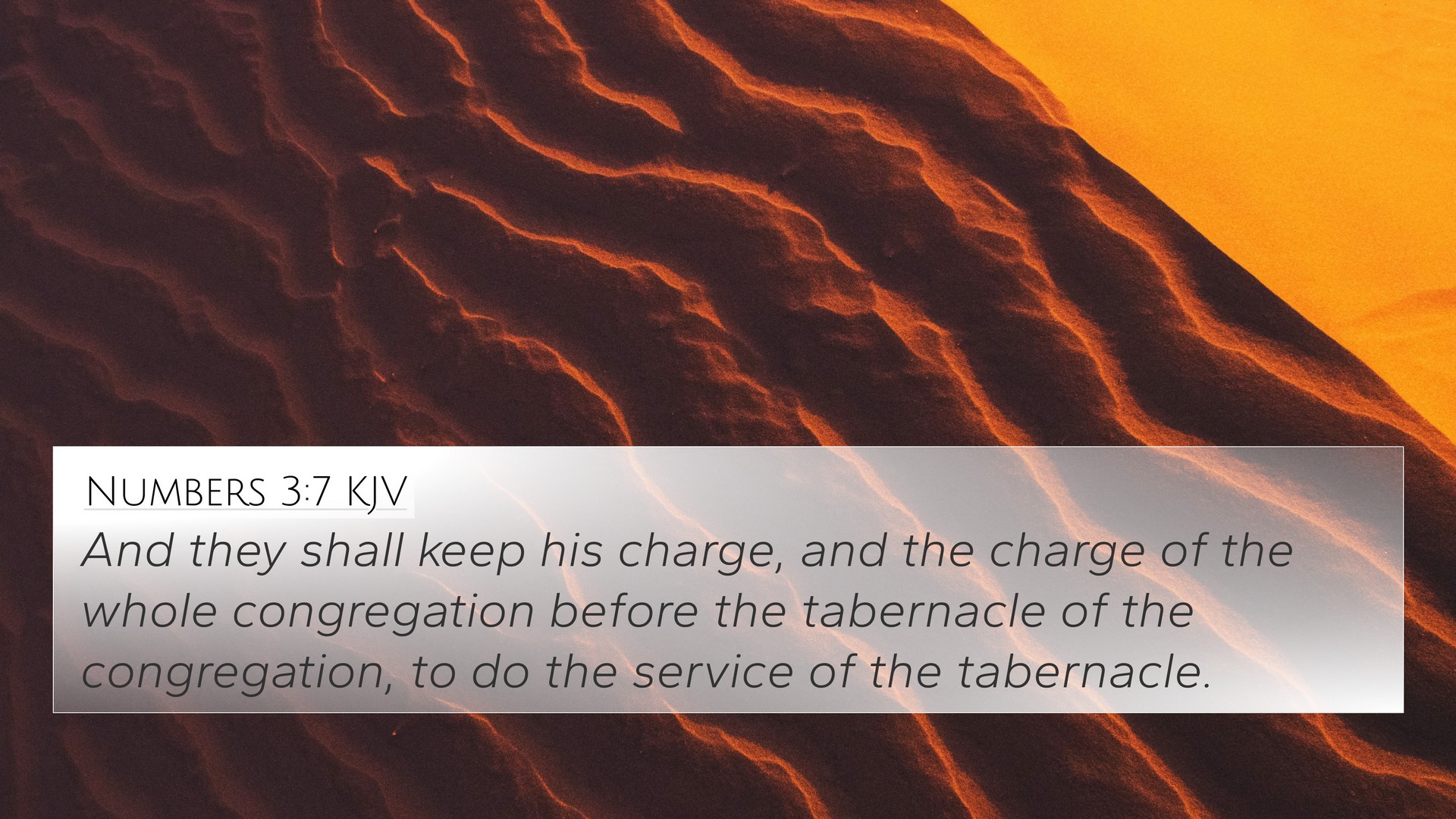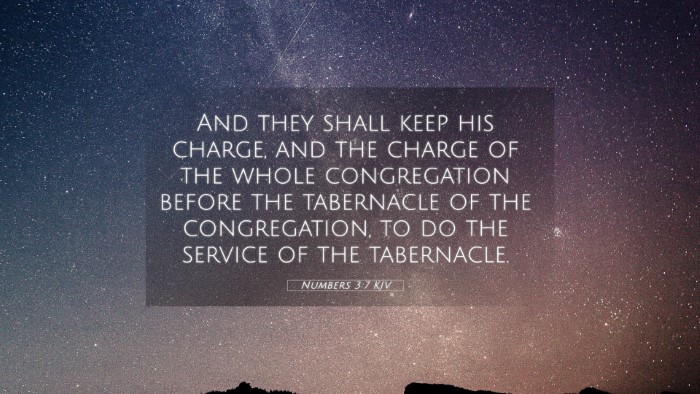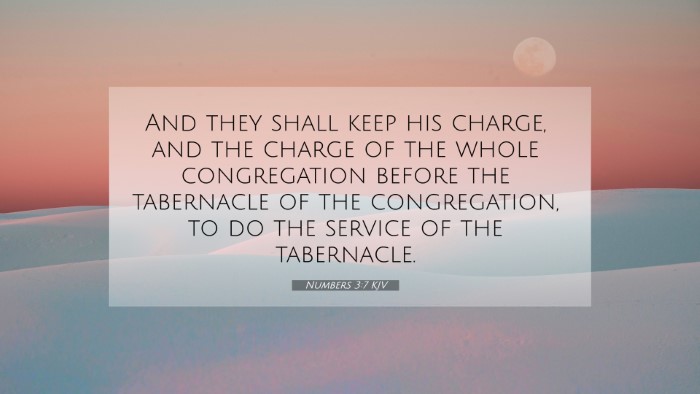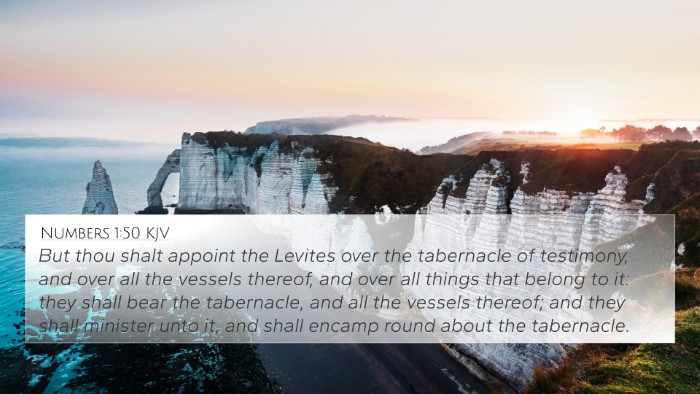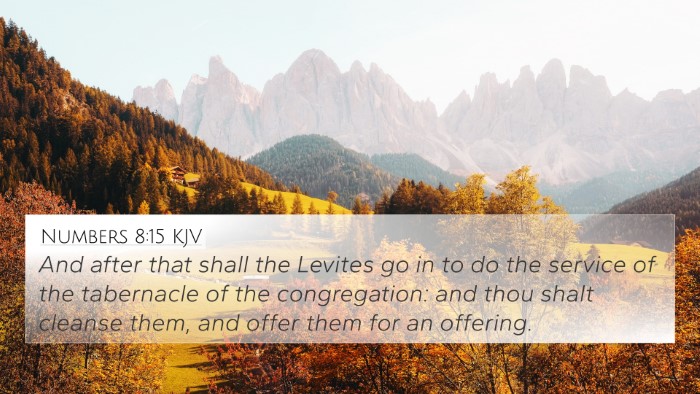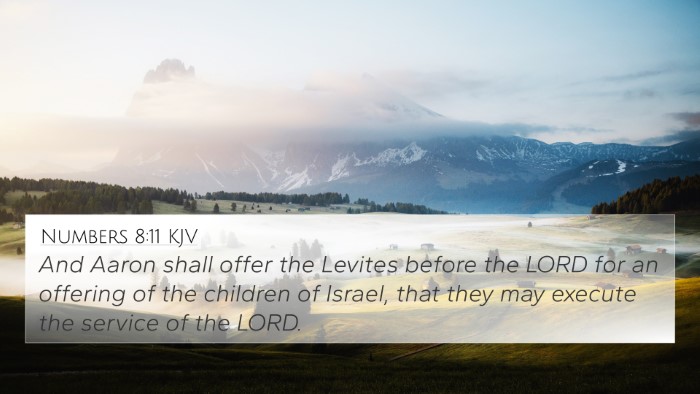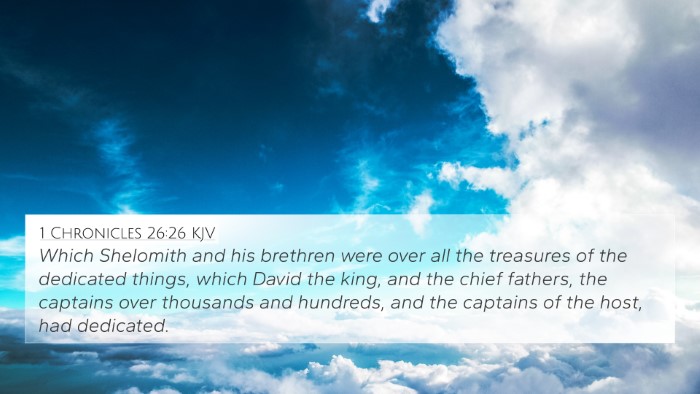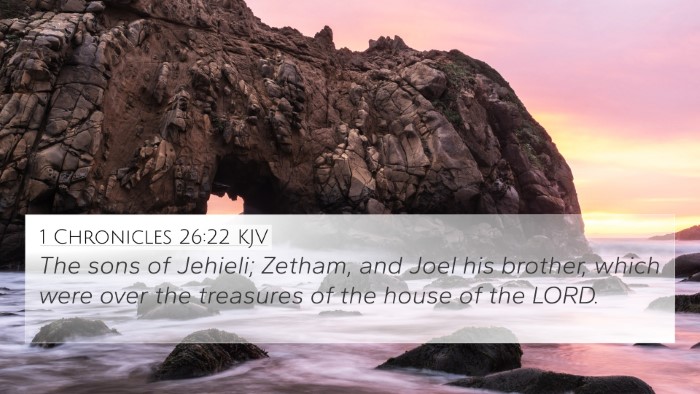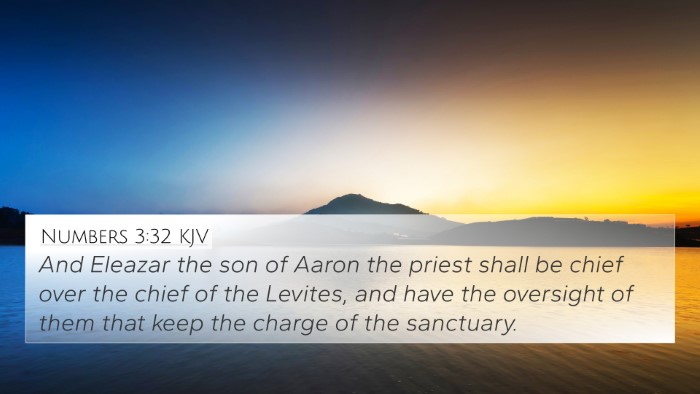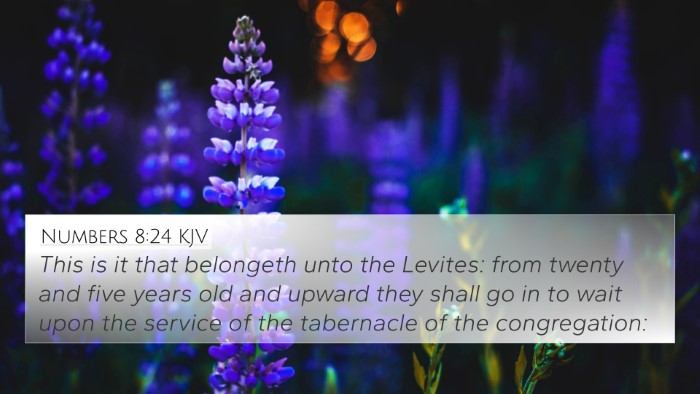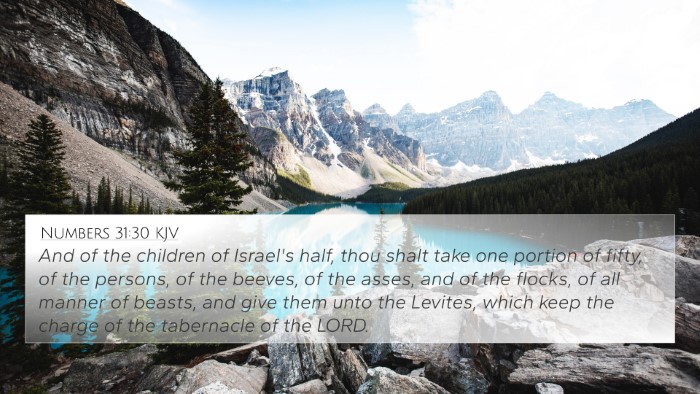Understanding Numbers 3:7
The verse Numbers 3:7 states, "And they shall keep his charge, and the charge of the whole congregation before the tabernacle of the congregation, to do the service of the tabernacle." This passage is integral for understanding the roles and responsibilities within the Israelite community, particularly concerning the Levites and their duties related to the tabernacle.
Meaning and Interpretation
To grasp the significance of this verse, we will draw from public domain commentaries, focusing on the insights from Matthew Henry, Albert Barnes, and Adam Clarke.
Matthew Henry's Commentary
Matthew Henry emphasizes the importance of the Levites' role in safeguarding the sanctity of the tabernacle. He notes that their duties extend beyond mere physical labor; they are responsible for maintaining the divine order and facilitating worship among the people. Henry asserts that this service reflects the seriousness of approaching God and the necessity of proper conduct in worship.
Albert Barnes' Notes
Albert Barnes highlights that the tribes of Levi were set apart for the service of the sanctuary. He explains that their responsibilities included not only the care of the tabernacle but also serving as mediators between God and the Israelites. By doing so, they contributed to the spiritual wellbeing of the entire congregation, ensuring that worship was carried out correctly and consistently.
Adam Clarke's Commentary
Adam Clarke provides a detailed analysis of the organizational structure surrounding the Levites. He outlines that the Levites were entrusted with significant responsibilities, reflecting a divine appointment to lead worship. Clarke emphasizes that this role was critical for the community's spiritual health and offers insight into the broader concept of service within God's kingdom.
Cross-References to Numbers 3:7
This verse connects to several other biblical texts that enhance its meaning. Here are some significant cross-references:
- Exodus 28:1: Discusses the selection of Aaron and his sons as priests, highlighting the leadership structure in worship.
- Leviticus 10:3: God commands that His priests must approach Him with reverence, showcasing the seriousness of the Levite's duties.
- Psalms 99:6: Refers to Moses and Aaron among His priests, solidifying the Levites' historical role in leading worship.
- 1 Chronicles 6:48: Further details the assignments of the Levites in relation to the service of the tabernacle.
- Hebrews 5:1: Highlights the function of priests, offering an insight into the New Testament understanding of priestly duties.
- Nahum 1:14: God addresses the importance of those who serve Him, linking to the theme of divine service found in Numbers 3.
- 2 Chronicles 29:34: Discusses the service of the Levites during the reforms of King Hezekiah, affirming their ongoing importance.
- Matthew 5:17: Jesus did not come to abolish the law but to fulfill it, emphasizing continuity in the teachings regarding service.
- Acts 6:4: The apostles dedicated themselves to prayer and ministry, paralleling the Levites' responsibility in the early church context.
- Revelation 1:6: God makes His people royal priests, linking Old Testament practices to New Testament truth regarding communal worship.
Thematic Connections
This verse, along with its cross-references, illustrates themes of service, holiness, and the community's relationship with God. The Levites' role as custodians of worship underlines the importance of order and reverence in approaching God, a theme that resonates throughout both the Old and New Testaments.
Connections Between Bible Verses
Establishing connections between Bible verses enhances our understanding of scripture. The service of the Levites connects deeply with the concept of priesthood articulated in the New Testament, particularly in the writings of Paul and the author of Hebrews. These connections illustrate how New Testament believers are called to a similar service, reflecting the responsibilities outlined in Numbers 3:7.
Tools for Bible Cross-Referencing
When studying Bible verse connections, utilizing tools like a Bible concordance or a cross-reference Bible study guide is essential. These resources make it easier to find cross-references and identify connections between Old and New Testament themes.
Conclusion
Understanding Numbers 3:7 provides valuable insight into the structure of worship in ancient Israel and its significance for the church today. The connections between this verse and other scriptures emphasize the continuity of God's instruction regarding service and worship. As we explore these themes through comparative verse analysis, we deepen our understanding of God's call to His people in all ages.
